Christi Johnson is passionate about using intricate hand stitch to explore the intersections of history and emotion. Her art is not only visually captivating, but it also makes spiritual connections to the past, present and future. For Christi, every stitch combines centuries-old traditions with the potential of what’s yet to come.
Christi also uses her needle and thread as an active pathway to mindfulness. She immerses herself in a meditative stitching process that allows her to remain in the present moment. Every stitch and thread carries intention, creating a calm and reflective ritual.
Her portfolio is diverse, including clothing, traditional embroideries and stuffed sculptures – all her pieces are united through incredible artisanship. Simple stitches combine to suggest complex and interconnected themes that are colourful and engaging.
Enjoy this look into Christi’s magical world where the body, mind and soul truly come together through stitch.
Ripple effect
Christi Johnson: Born into piles of scrap fabrics and bottles of tie dye, garment design and construction has been my life path. I’m an artist, author and teacher, and my work focuses on how influential artmaking can be, in all areas of our lives.
Taking an idea, figuring out the steps to bring it into reality, then taking inspired action is how we learn to create change in our world. Initially, it’s on a small scale but then this power tends to ripple out into other areas of our life.
To encourage this experience in others, I make my style of teaching as easy to understand as possible. That way the student can quickly feel capable of their ability to turn my teachings into their own creations.
“Creative practice is liberating.”
Christi Johnson, Textile artist

Meditative mindset
My work is an exploration of themes of spirituality, transcendence and evolution. This feeling really began to emerge after I started a meditation practice.
Although I don’t have a consistent meditation practice now, I try to bring those same qualities to whatever I’m doing. By being present in everyday experiences – whether chopping vegetables or folding laundry – I can still connect with that cosmic feeling of transcendence.
This mindset has been supported by a shift in lifestyle from a busy fashion job in a big, glorious city, to a quiet home with a summer garden and a few sassy chickens. It isn’t any easier than a city life, but it does feel more authentic to my introverted personality.
After living in cities for my entire adult life, this move to a rural area allowed me the mental and physical space to explore artistic themes of mythology and its connection to the natural world.
The cyclical nature of the seasons, witnessing the death and rebirth of plant life and the necessity of elements like fire and water allowed these ancient stories to exist in a context where they were suddenly more relevant.
“When my needle and thread travel through the fabric, it’s as though I’m connected to the past, present and future all at once.”
Christi Johnson, Textile artist
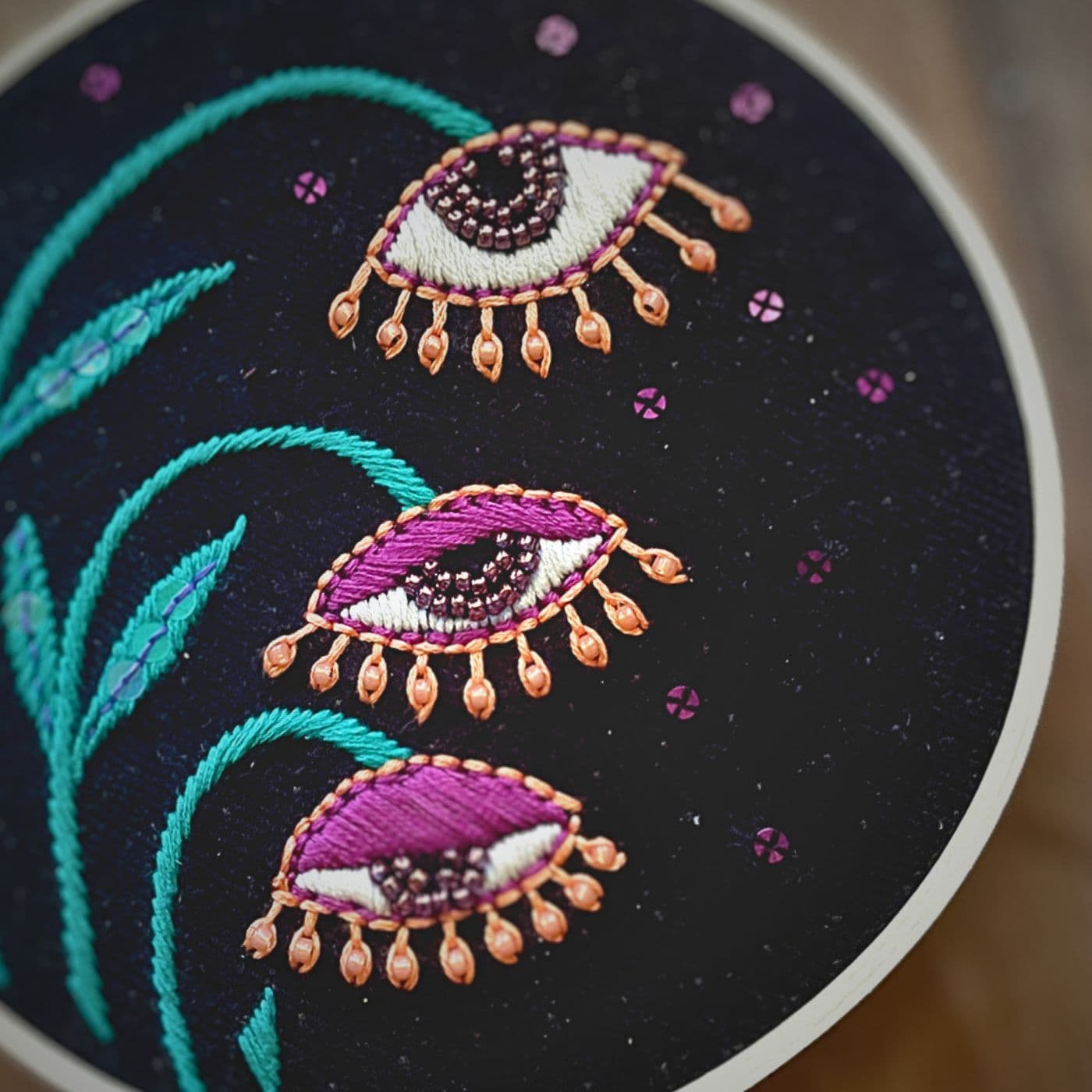
Myths & legends
Moving to the mountains has had a huge impact on me and my artwork. Having grown up in Florida and then lived in Los Angeles, California for ten years, I was used to climates where winter doesn’t exist.
Every year I witness how plants completely die down to the ground, only to be reborn – and this never gets old. Every year I ask, how long will it be before this transformation ceases to fascinate me? A decade on and it hasn’t happened yet.
Each year, I too get to go on my own underground journey and find my own myths and legends.
These stories of ancient mythology often have me recoiling in horror at the violence and injustice, the raw truth of our capabilities. However, this helps to frame life’s experiences in a larger picture – like feeling microscopic when surrounded by a vast, epic landscape – but in myth, the experience of awe runs the gamut from awesome to awful.
“I have the chance to reflect on how the myths and legends of the past are a thread running through my own experience.”
Christi Johnson, Textile artist
We live in a cyclical world where pendulums swing and the end is always leaving us at the beginning. The beginning of what? That’s up for us to create.
One thing that continues to come up is humanity’s ability to create, no matter what has been destroyed. So, I keep on making art because that’s what feeds and fuels me – and keeps me writing new stories.
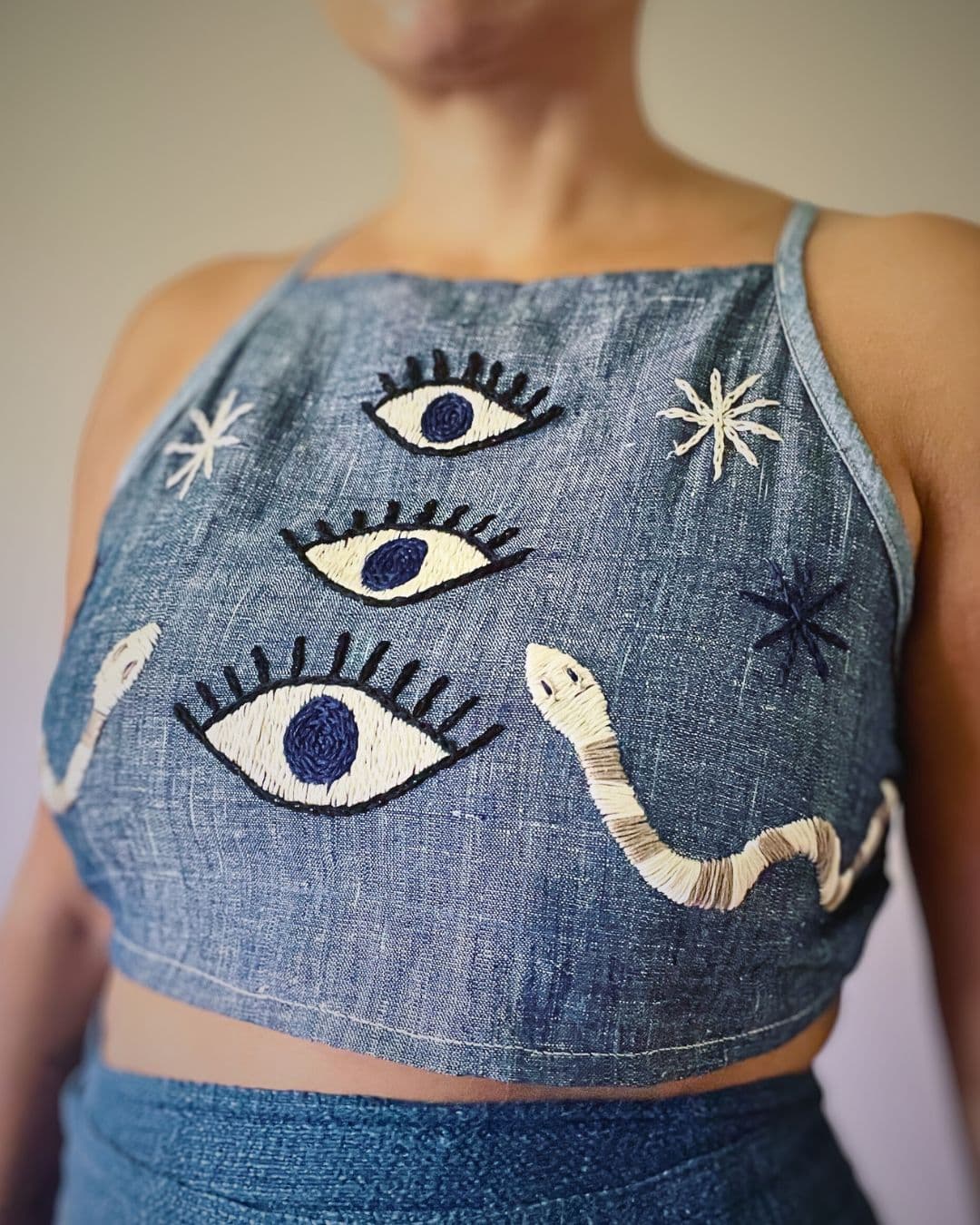
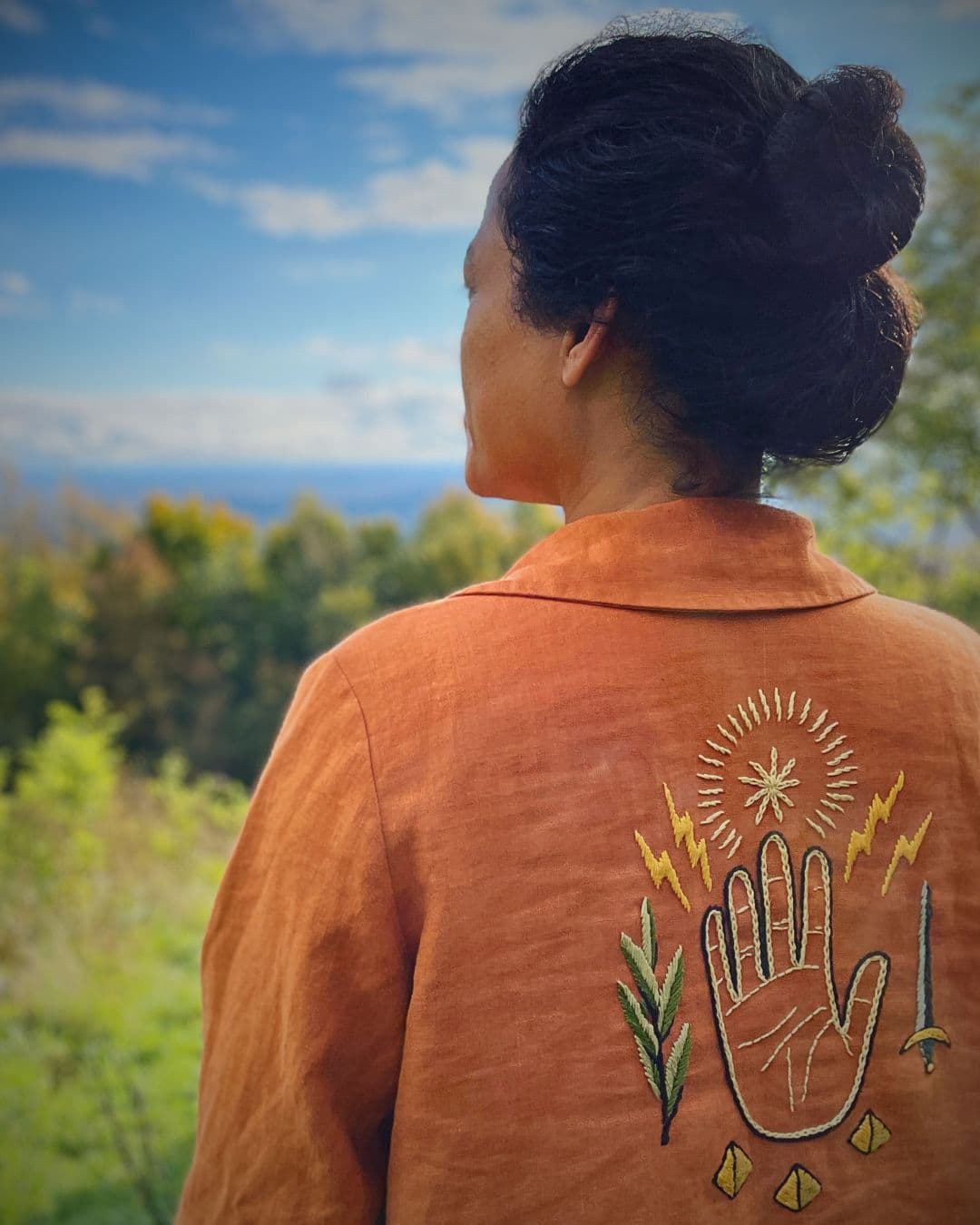
Enchanted stuffies
I recently got an itch to start making stuffed sculptures. It was simply for the fun of taking a dream and turning it into a reality.
After months of studying my daughter’s stuffed animals, I started to see the similarities in techniques between sewing garments to fit a form and sewing animals to create a form.
I became enchanted with the reduction required to express these animals on a much smaller scale as well as the potential for decoration these blank canvases possessed.
In my Stitch Club workshop, I show members how to develop stuffed forms based on nature’s creatures. I use the project to explore how witnessing the lifestyles and rhythms of nature’s creatures allows us to better understand ourselves through the power of myth.
The technique for making these flat stuffed creatures is very simple. However, the opportunity for decoration on a flat form provides a greater opportunity for learning new ways of stitching than an overly complex pattern would.
It’s also an opportunity for learning new methods of expression through these animals and the stories we get to tell through them.
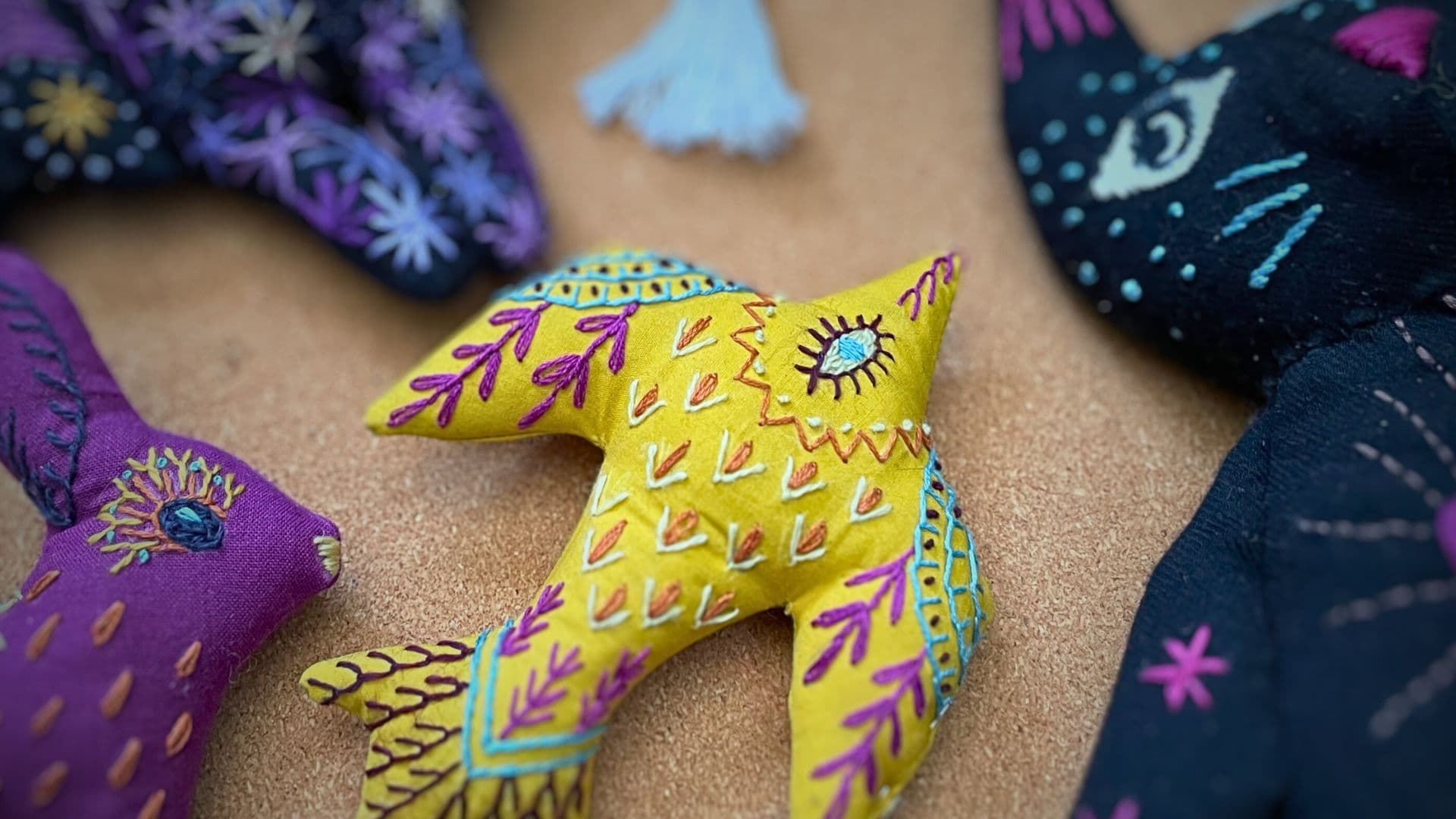
Mind wandering
I’m never without my sketchbook. I don’t have a great memory, so it serves as an external memory bank. I can frequently return to it to shape ideas or concepts that may still feel half-baked.
However, while my sketchbook is where all these themes are recorded, my ideas actually arise in that mental space as I’m drifting off into dreamland.
Despite proving this time and time again, I find it hilarious that I’ll still find myself staring at the blank page, pencil in hand, hoping to push ideas through. Usually this leads to a frustration that can only be resolved by closing my eyes, taking a walk in nature or making something to eat or drink. At this point I remember – that’s right, I was using my logical mind.
The ideas that really light me up and take me to unexpected places always come from stepping away from the blank page – or any page for that matter.
Once I have an idea, I sketch into it in as many ways as I can – trying to push the limits of the concept, seeing how it manifests in a variety of shapes and fashions.
“Letting the mind wander, with eyes closed or focused on the natural world, is as integral to my process as a pen or pencil.”
Christi Johnson, Textile artist

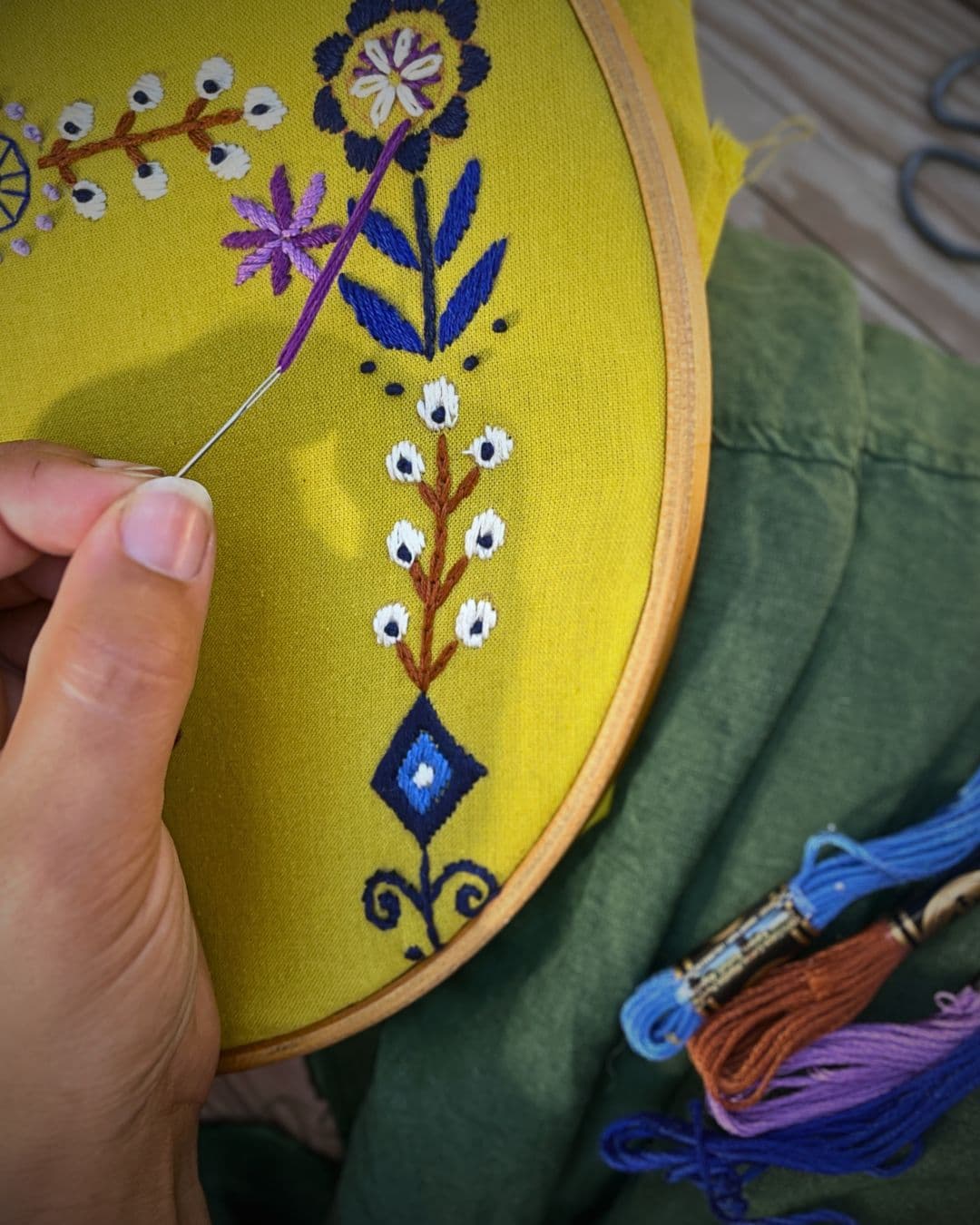
Digital fine-tuning
After this stage, I generally bring in technology to refine my work. This might include scanning or photographing the drawing and playing with composition. Or if the drawing and imagery feel complete, I’ll move directly into planning colours. I’m always refining colour palettes in a digital format.
Despite being technologically resistant, the markup tool on my iPhone is my most valuable tool after mind wandering. It’s been transformative for my process and has probably saved me thousands of hours. It allows me to play with a variety of colour variations and quickly see what doesn’t work. No ripping out of stitches needed!
You don’t need a precise drawing to see if a certain colour combination is working. I prefer to spend my time reviewing options rather than painstakingly re-creating my drawing with a fingertip on a cell phone. I keep precision for my stitching.
“When using digital colour options, I recommend allowing them to be wildly imperfect.
My drawings often look like very loose scribbles.”
Christi Johnson, Textile artist
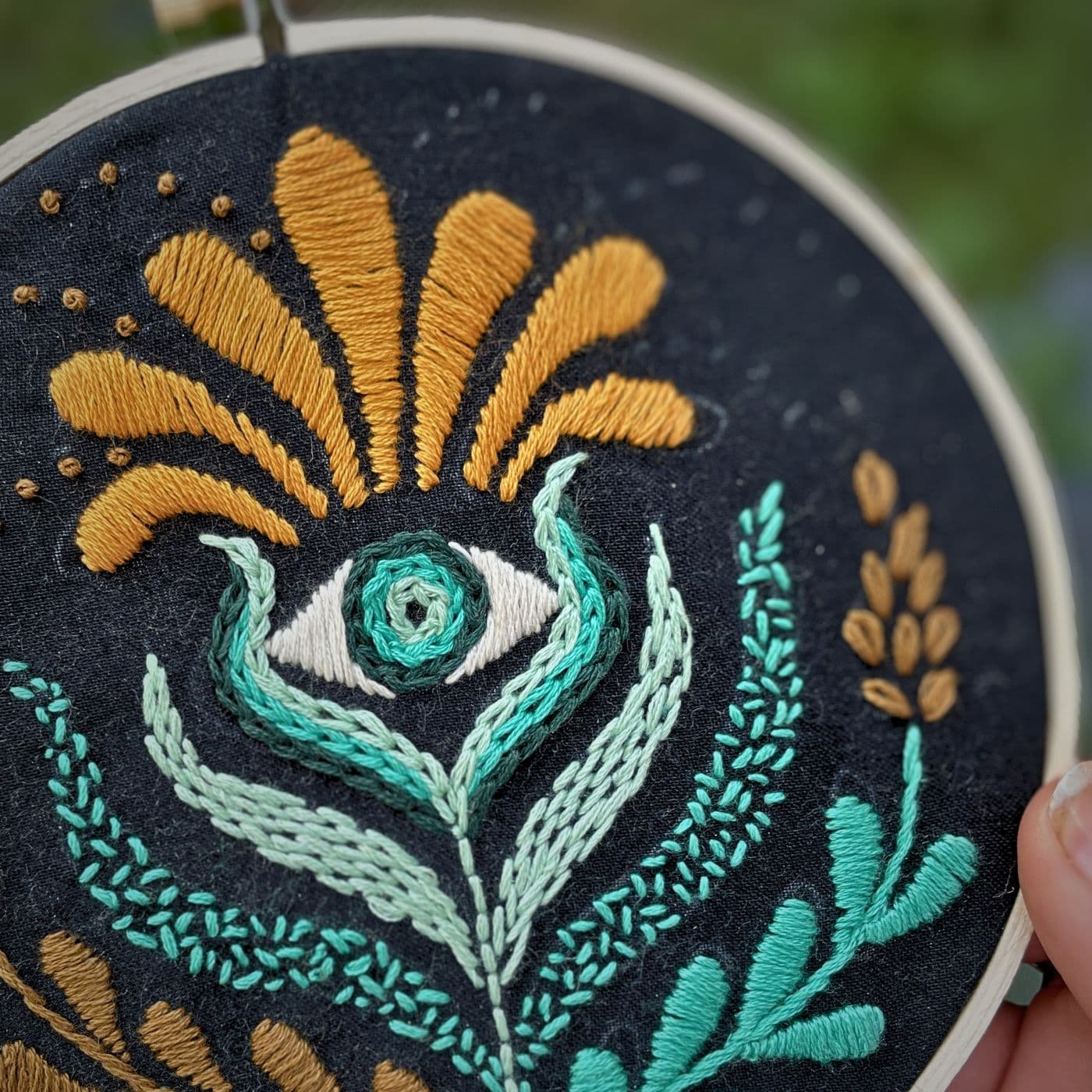
Zero-waste creativity
While working in the fashion industry I saw firsthand how much waste was created in the production of garments – however resourceful one tries to be, unfortunately it’s the reality of the process.
This influenced my movement towards more sustainable, zero-waste options for my creations.
I try to purchase natural materials – preferably re-used, off-cuts or deadstock – and from companies that are concerned with the health and livelihood of all the human hands that touch the materials on the way to my door.
Reusing materials not only reduces the environmental impact but also provides a fun challenge. I enjoy the limitations of using just a few skeins of a vintage silk, or a half yard of some incredible linen.
Environmental impact is always at the forefront of my mind; however, I don’t obsess over everything needing to be upcycled. Sometimes I need a specific colour such as a perfect citrine yellow cotton to finish a project. I’m okay with grabbing a length from my local store and not worrying about my single purchase contributing to the downfall of our ecosystems.
There’s no way I can produce work at a speed that could be considered unsustainable in the long run. My greatest advice would be to look at the materials you already have. Trade with a friend or see what offcuts your local fabric store has. The inspiration gained from these mystery materials is likely to trigger a whole new way of thinking about your work.
“I believe it’s all about balance. Besides, slow methods are inherently more ecologically minded.”
Christi Johnson, Textile artist
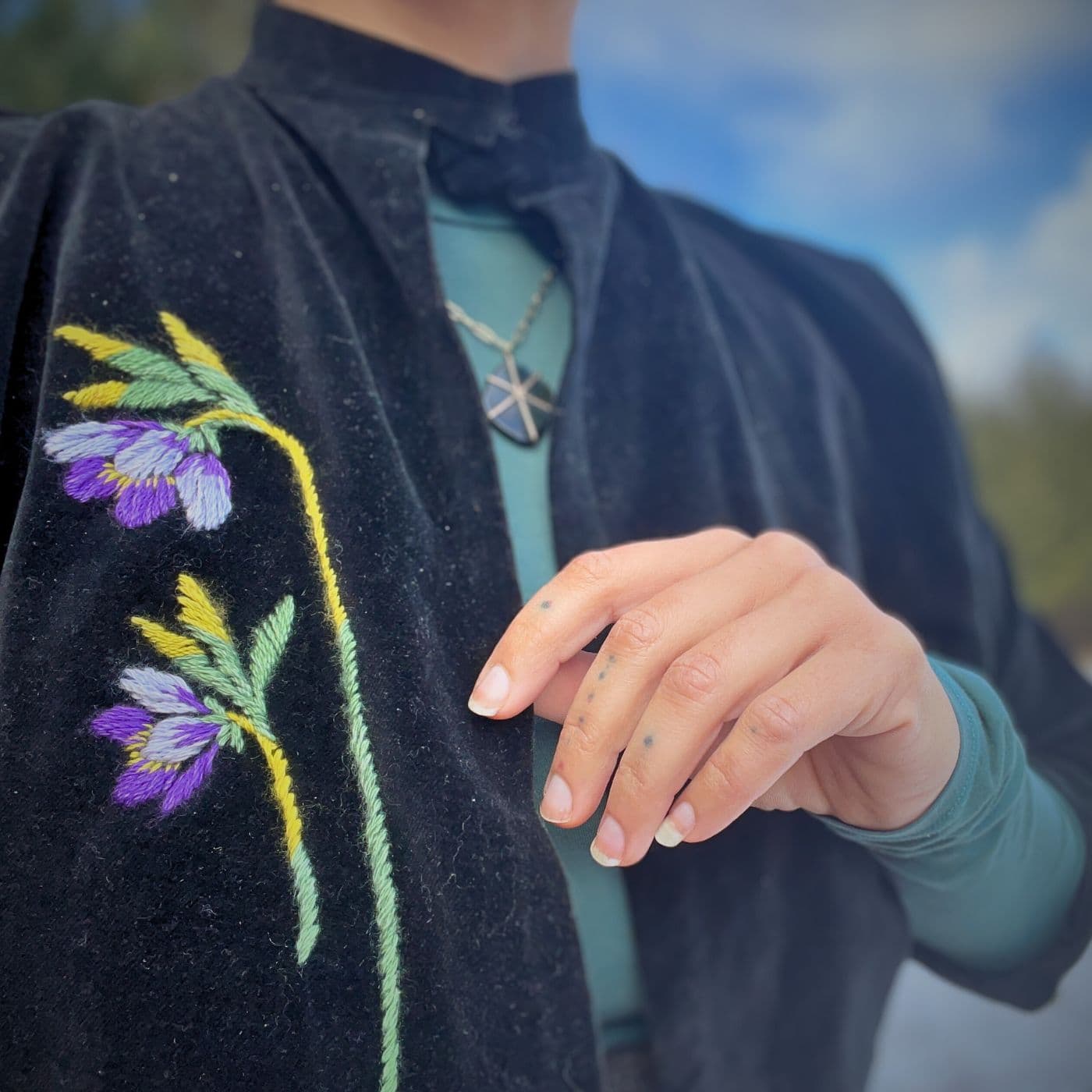
Must-have tools
If I can’t see it, it’s not there! This means I’m always searching for the best way to view materials that allows them to be seen but isn’t a chaotic mess. It’s important to me that all my colours be visible therefore I organise my materials accordingly.
I store my fabric in open baskets, each stacked vertically with the folded edge up (like files in a filing cabinet). I store them in rainbow order and categorised by weight so I easily know what project any piece will suit.
For my threads, I have acrylic drawers. These are one of my exceptions to the ‘no plastic in the studio’ rule. Each drawer is about 5cm (2”) deep and the length of a skein of floss and contains a single hue or two.
I can pull out all the drawers and view all of my floss at once or simply scan the front of the drawer for the colour I need. This has been transformative for keeping my embroidery threads organised. I use too many threads to wrap them all on the little cards, so I just let these drawers be a little chaotic and tidy them up every few months as needed.
Years ago, we had a clothing moth infestation, so we are religious about keeping wool under lock and key. The moths have left, but this rule hasn’t.
For my wool yarns, I use clear Tupperware bins with a foam sealed gusset (another exception to ‘no plastics in the studio’). Honestly, these are one of the best studio investments I’ve ever made!
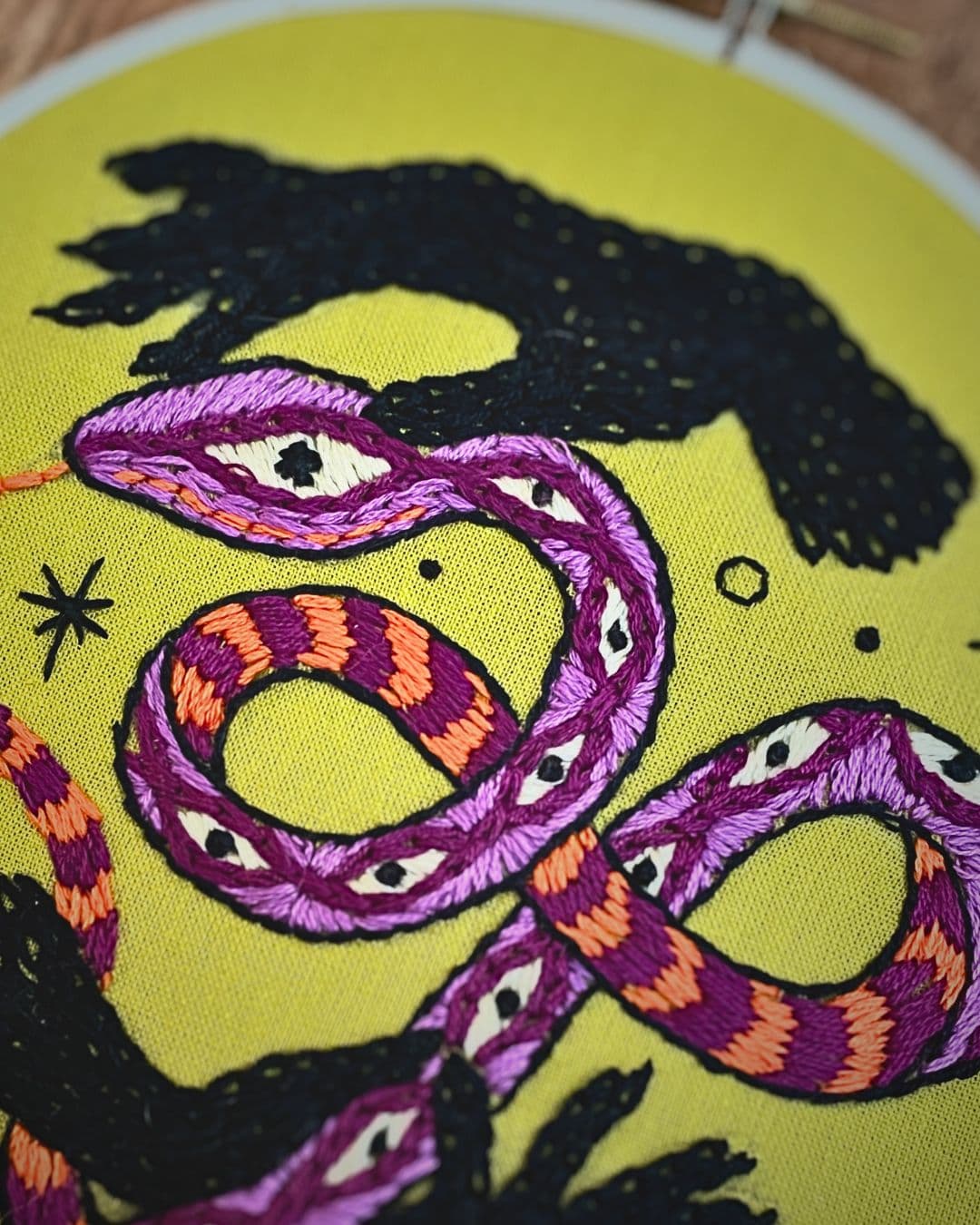
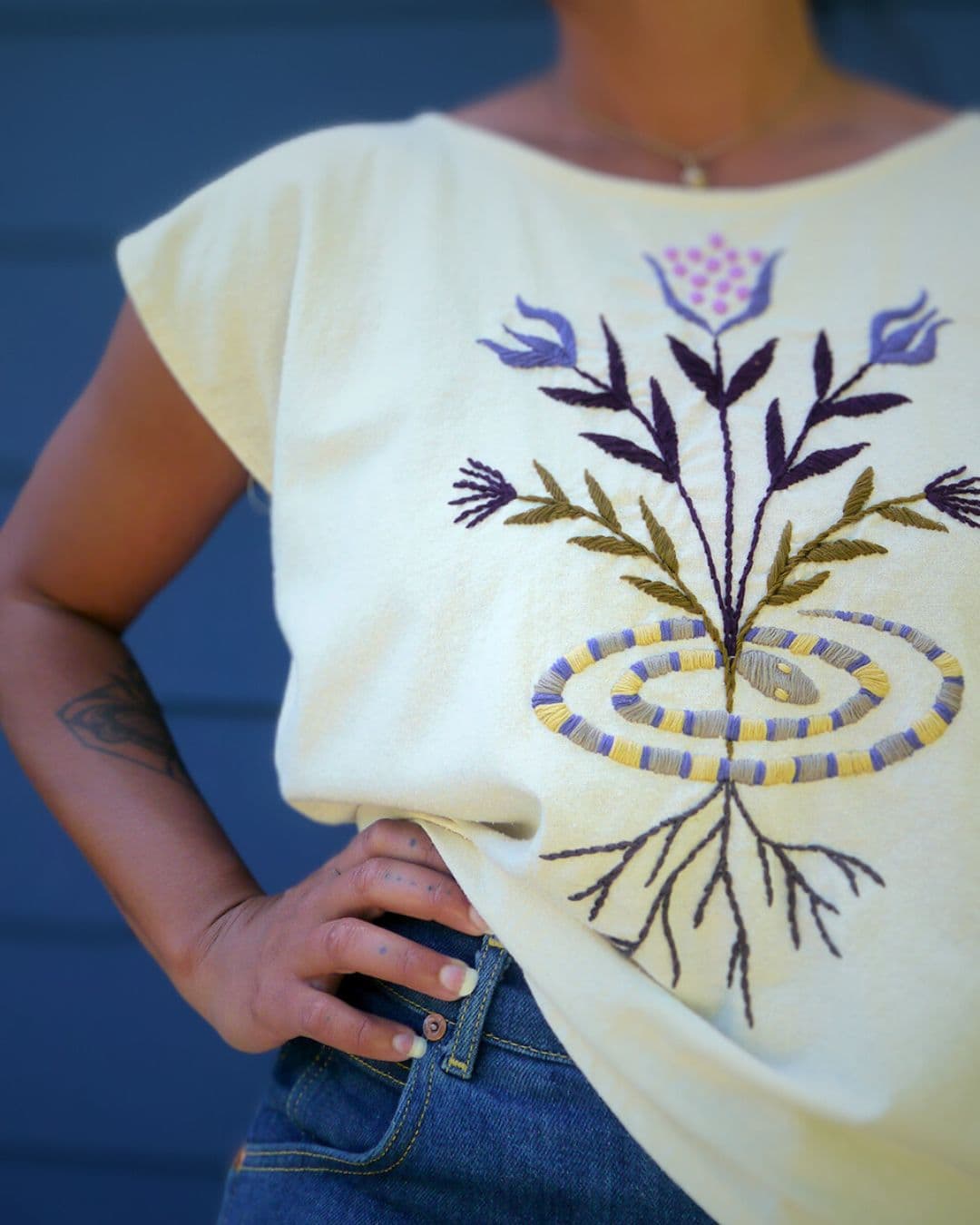
The cool sister
The most influential experiences for me were in the home. My mother’s textile art practice stretched throughout our house: stitching up wall hangings and cushions, knitting us all intarsia sweaters on her knitting machine. Although I’m not sure why we needed so many sweaters in tropical south Florida!
At a very young age, my sister studied fashion design at the local community college. Since she was by far the coolest person I knew, I was obsessed with watching how she made clothes from scratch – the patterns, the books, the scraps – all of it was fascinating.
I went on to study fashion, and while working in the fashion industry had the pleasure of working for a designer who manufactured in-house. I worked in the fashion industry for about a decade, and while I truly love the creative aspect of making clothes, the manufacturing and production aspect felt all too much.
In 2015, I founded Mixed Color, a textile studio in the Catskill Mountains of upstate New York. Here I create original garments as well as develop embroidered elements to add to vintage garments.
“There is no version of life I could have imagined that did not include handmade, vibrantly colourful designs everywhere.”
Christi Johnson, Textile artist
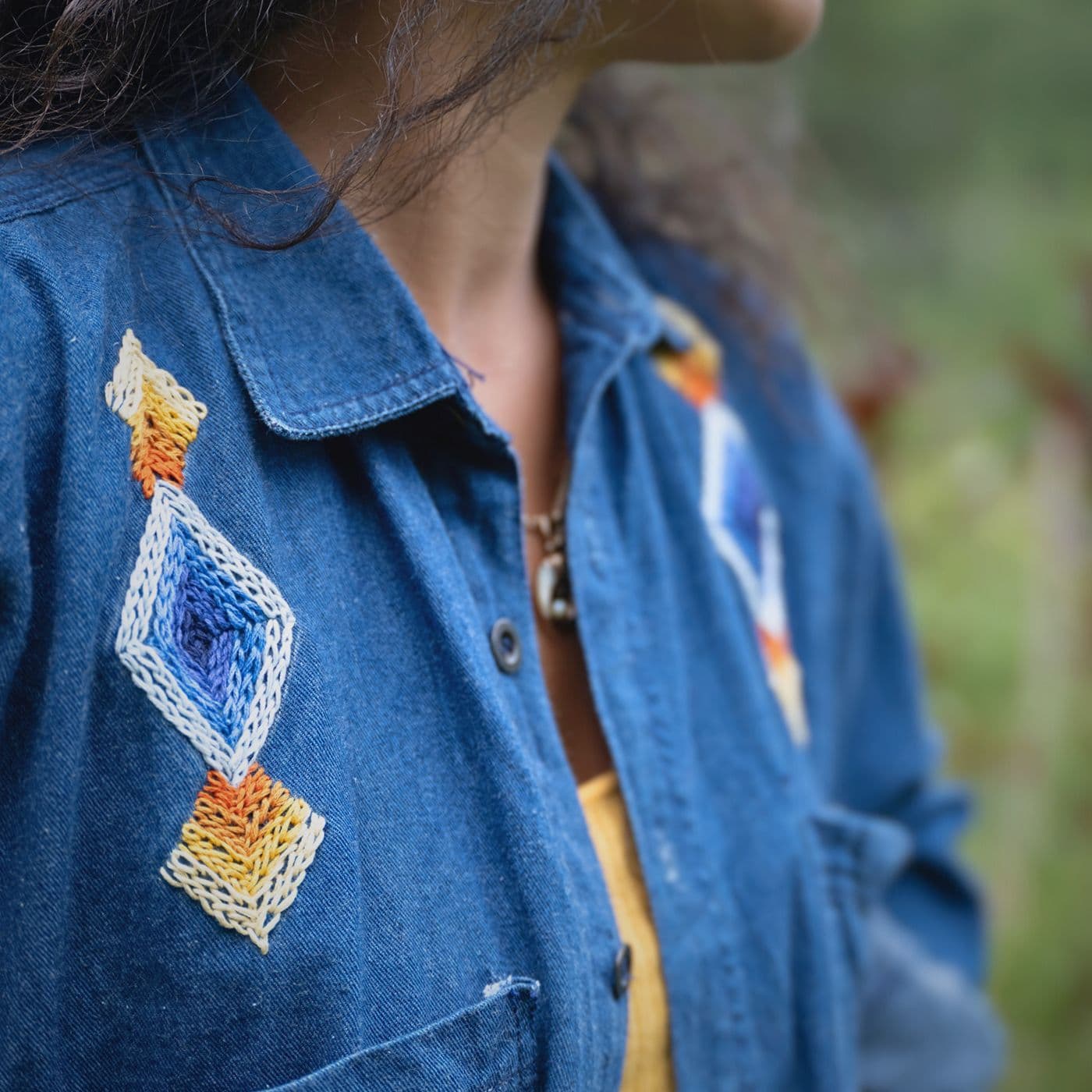
Play & explore
It’s important to make time to play with the materials, play with techniques and just explore without any expectations.
This is something I’m working with myself right now. I have so little free time while taking care of a toddler. I can’t exactly take out a needle and do a little experimenting. I know so many people are in a similar position, whether that’s due to a toddler, a puppy, an aging parent or partner, a stressful living situation, or a job that requires a significant amount of time and brain space.
When we’re really busy and have a thousand immediate priorities, we can put the creative part of our practice on the backburner. I don’t just mean the production part of the process, which is also incredibly important, but the creativity that can only emerge from play and experimentation.
When we keep putting this off, it’s a great time to take stock and reflect. I ask myself which part of me thinks art is any less valuable than everything else I do, and why am I putting art to the end of the list?
The longer you put off play and experimentation, the harder it gets. Those ‘new ideas’ muscles start to calcify and seize up. They’ll need to be warmed and stretched much more when finally, you do get back to them.
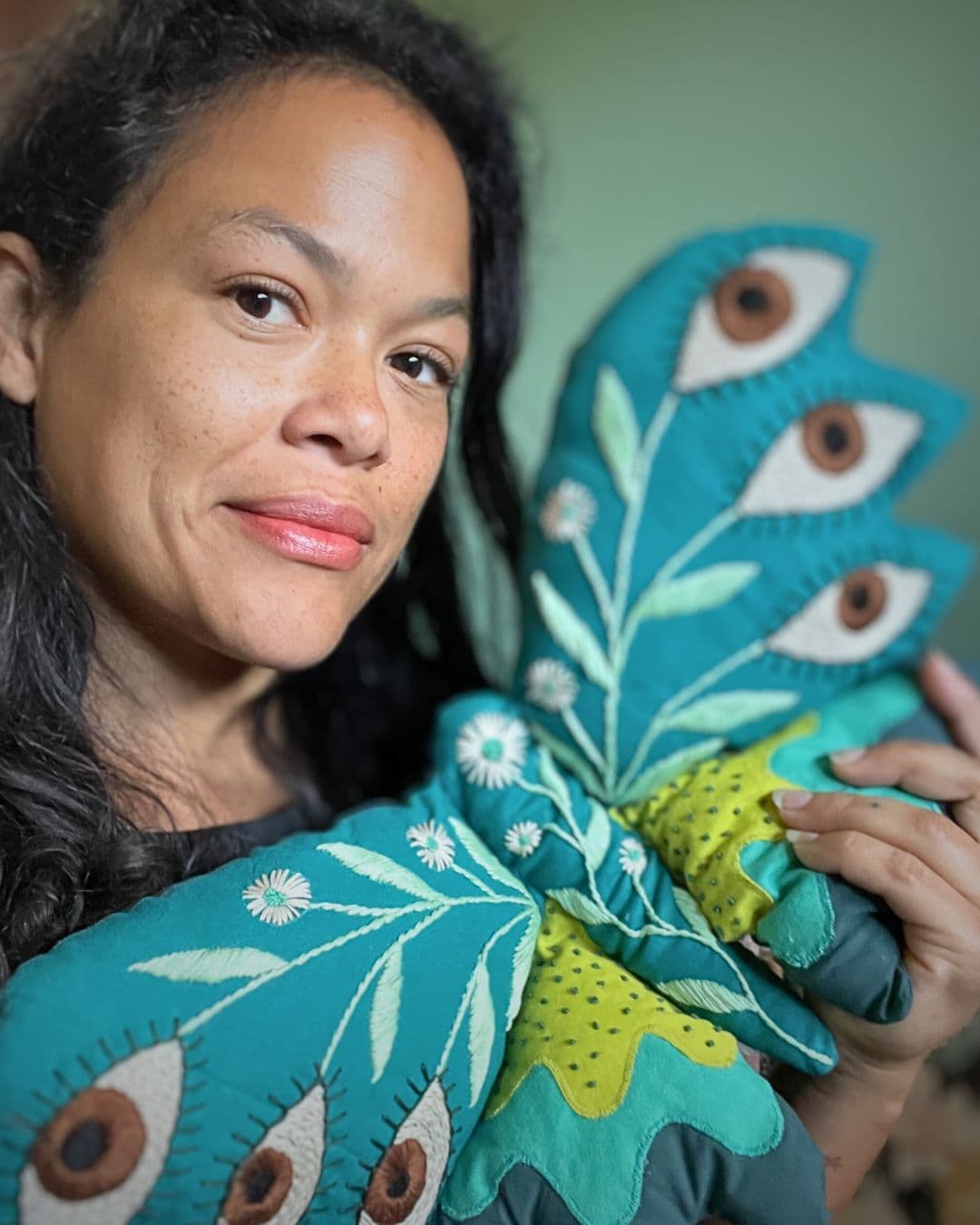
Getting unstuck
So often when we’re feeling stuck, it’s our logical mind trying to make sense of a process that is inherently nonsensical. So, I try to dive into that by bringing in elements of the unknown such as exploring the dream world or ancient mythology.
For me it often looks like pulling out a tarot card or looking at the current astrological positions. Before you roll your eyes or feel a sense of constriction, I hope you’ll consider how these mysteries can be expansive rather than predictive or contradictory of free will.
The mystical and the spiritual and the woo can be so annoying, because we want to explain exactly why or how something happened. Yet these experiences quite often are flying in the face of logic and don’t make sense.
How does a tarot deck work? How does astrology affect us?
These questions can’t be answered, yet we still sit here thinking we know everything – despite knowing what less than 10% of the brain is used for.
Next time you feel stuck, let yourself be influenced by a bit of mystery. You don’t need an explanation for everything.

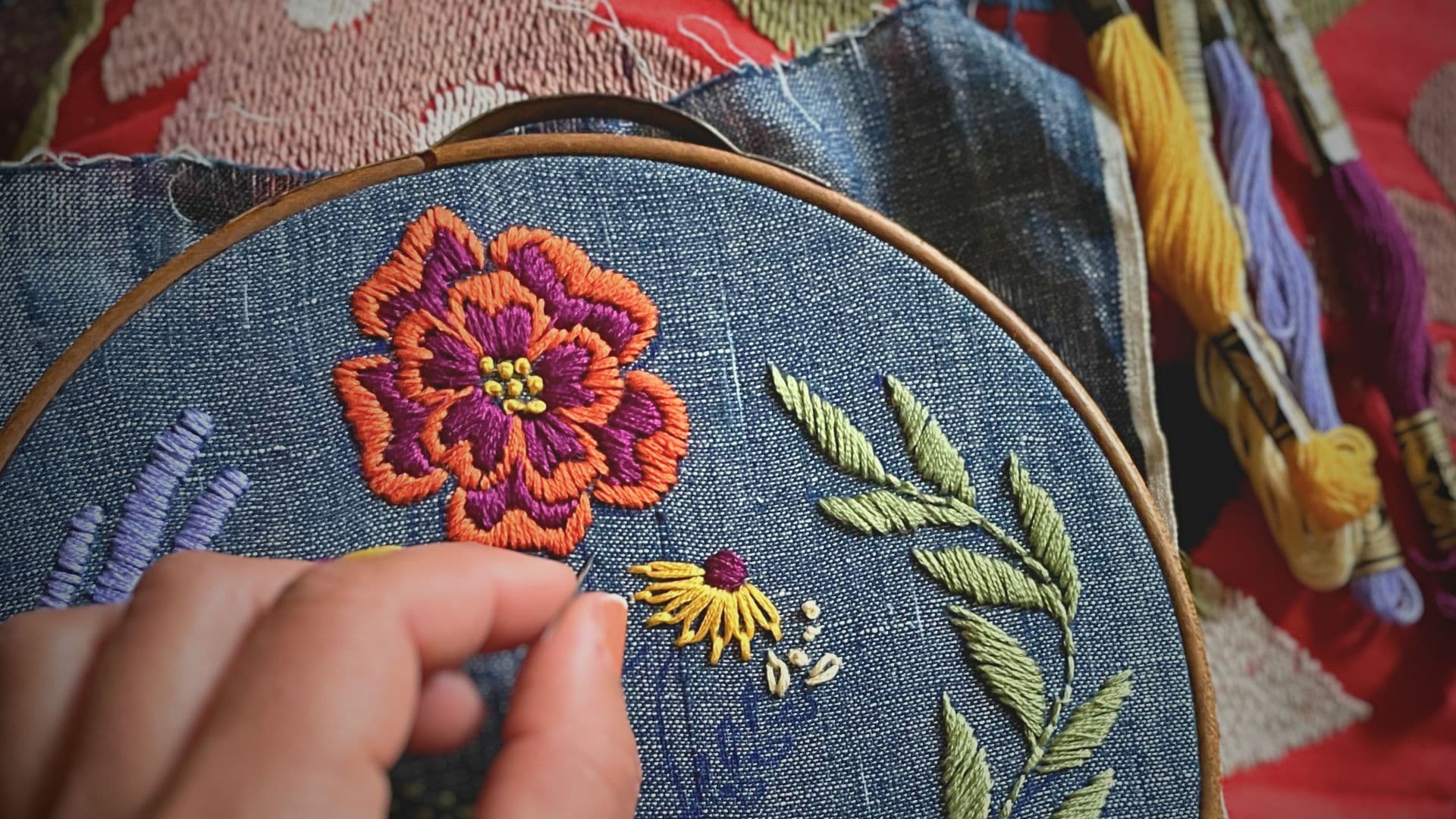
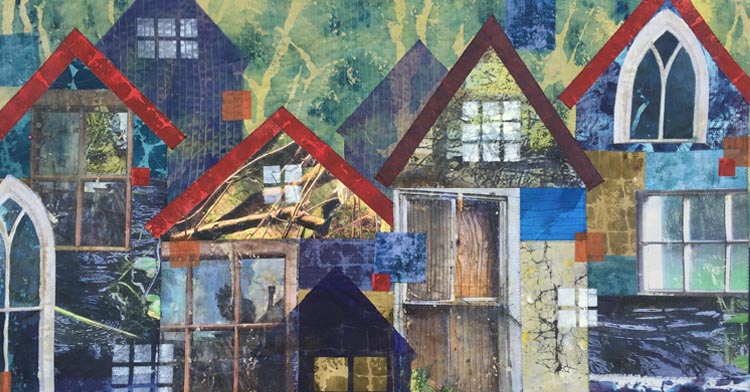
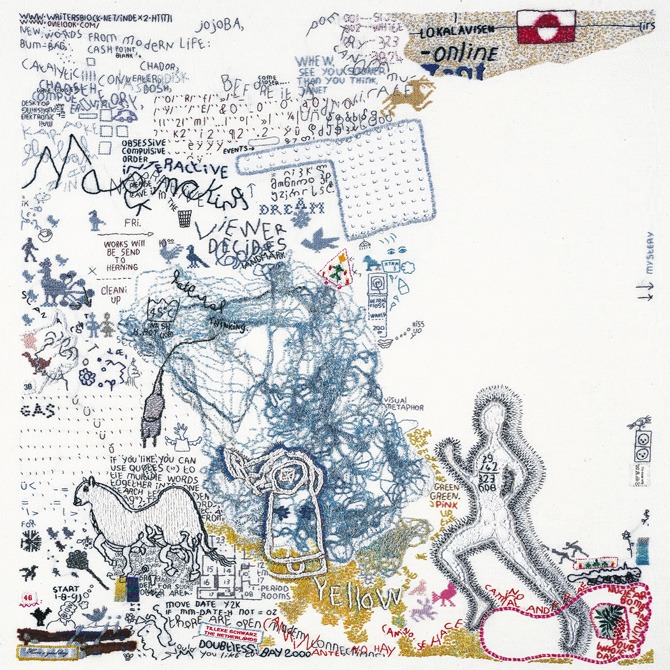
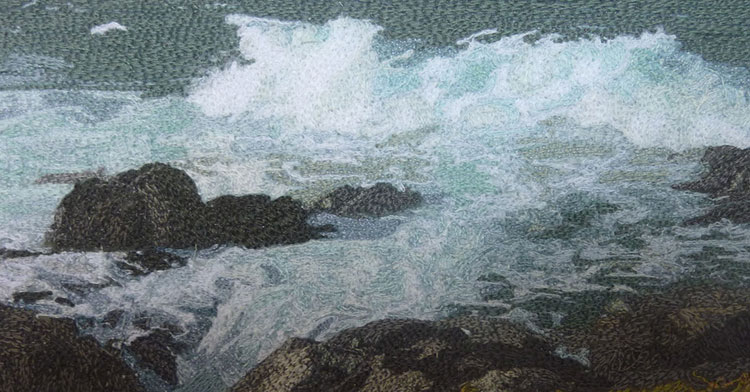

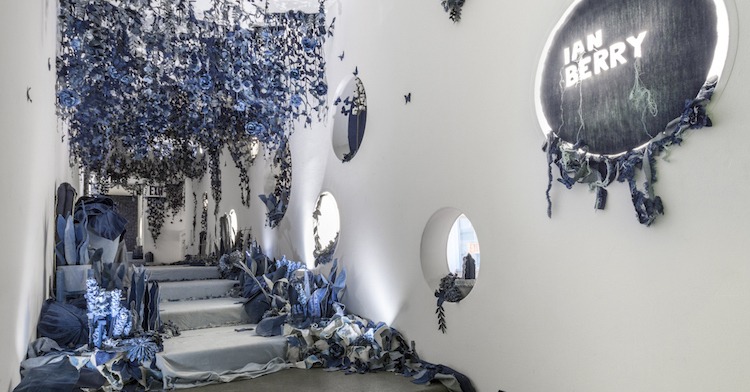
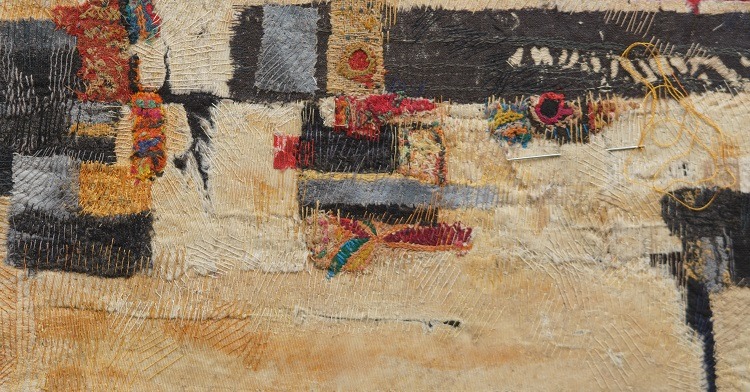
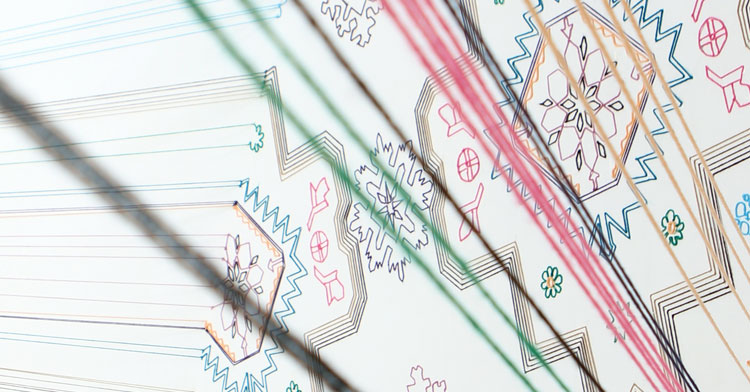
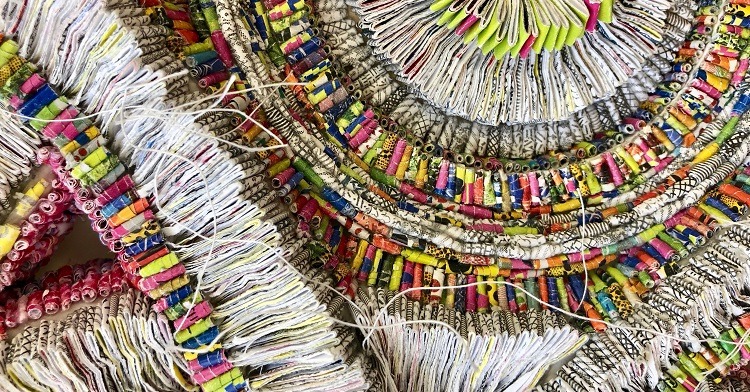

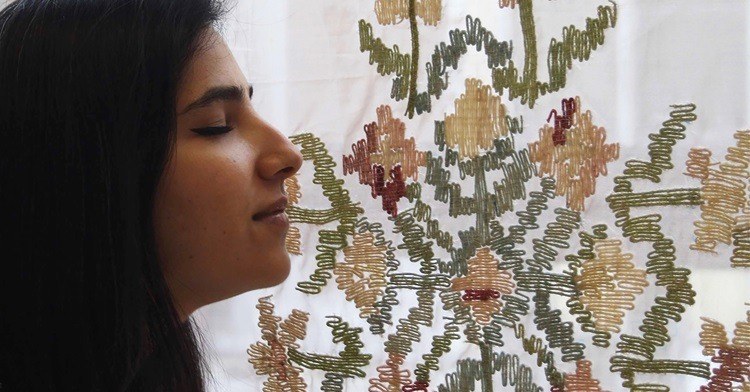
1 comment
Sharron Deacon Begg
I don’t think there is a fibre artist out there that doesn’t feel the meditative quality of the stitch. I am mostly a machine embroiderer and once that machine starts to run and my hands are guiding the hoop, and together we are creating
something beautiful, all time disappears and the brain is focused, we are in meditation.